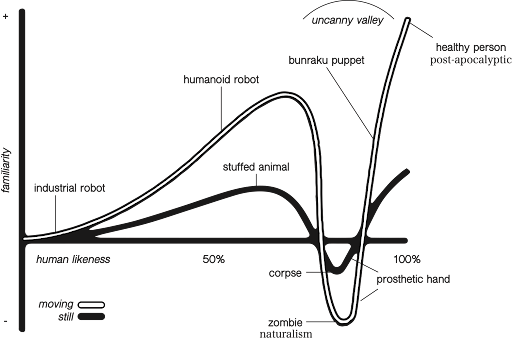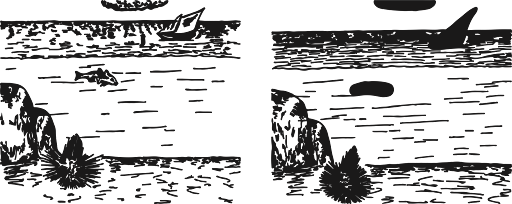How to Generate Distance — Exercises on Ecology and Perception by Eurico Sá Fernandes
In the past years I’ve become interested in ecological thinking in relation to perception and the role that technology plays in that realm. The way in which the current instability of Earth’s system is brought to a new awareness of other beings and realities that cannot be totally grasped from human perception. In an attempt to expand human perceptual abilities, humans have built a number of tools. I believe this effort expands thinking into a realm where the human is no longer in the centre of the world, forcing us to think in a third-person perspective—not only on the impact that our actions have on us but on the impact on a system that might be outside our direct perception.
Generating Distance is an exercise on ecology and perception, a workshop I ran as part of the Hackers and Designers Summer Academy 2019. During the workshop, participants are invited to create an action-adventure game played in the real world but from a third-person perspective. This workshop seeks to experiment with the constraints that arise when you distance yourself from your centre. By creating a new awareness of the body and its surroundings, it opens up new possibilities and ways of understanding. In this piece I attempt to analyze the conceptual framework of the workshop, an attempt to clarify the relevance of the constraints that participants adopt during its course. Here, I’m talking about the way in which climate change has driven contemporary human thought through a shift in perception.
The contemporary state of ecological emergency has unveiled a time where massive non-human entities, distributed in time and space, make decisive contact with humans, threatening to end important human concepts such as ‘world’, ‘horizontal nature’, and ‘environment’. Global warming is perhaps the most dramatic example of what Timothy Morton calls “Hyperobjects”—entities of such vast temporal and spatial dimensions that they defeat traditional ideas about what a thing is in the first place. The exploration of terrestrial systems and the technification of Earth’s resources have been vital for human development throughout history, which in turn have had a high impact on Earth’s biosphere integrity.
The development of agriculture allowed humans to manipulate other species, animals as well as plants, for their own use. Such developments meant that humans no longer had the need to belong to any particular ecosystem, allowing an exponential increase and spread of the human population across Earth and causing a wave of extinctions in its wake. With Earth’s landscape profoundly modified, the widespread extraction and adoption of fossil fuels materialised by the Industrial Revolution had an unprecedented impact on Earth’s equilibrium, igniting a massive change leading to the beginning of what we describe today as the ecological crisis. This era, the Time of Hyperobjects, ignited a shift of the centre of the world away from the human realm, forcing humans to see themselves from a third-person perspective, making it impossible to achieve a final distance towards the world. Such understanding allows us to think about the effects that live outside the human perceptual bubble and opens up space for a new understanding of ecology.
Ecological discourse in the mainstream has long been a polarising topic, with a big part focusing on the hope for a return to the old stable ecosystem (Naturalism) and the vision of a dystopian future (Post-apocalyptic). These two ideas focus on two very distinct extremes, however I believe that neither of these perspectives are completely true.
What we often mean when we talk about 'nature' is a healthy and pure state, which was aroused at the start of the Holocene geological period, and which is marked by stable earth system fluctuations. Nature is defined as a harmonious periodic cycle, therefore eliminating the possibility of the concept Nature before Nature. If we believe that Nature existed before the concept Nature was created, then we have to accept that Nature is not something that is pure or untouched, as is often suggested. A truly natural state is certainly not the one that is represented by the concept Nature.
This idea inevitably brings a problem to the ecological discourse based on Naturalist and/or Post-apocalyptic aesthetics. Commonly, Naturalism suggests a return to nature, suggesting that a natural state can be somewhat regained—that a well balanced world is the one not disturbed by humans. It portrays the modern human as a cancerous entity which leads to fantasies on what the world might end up, or look like.
This fascination for the Post-apocalyptic is something familiar to most lovers of fiction. The world which we are presented with is both different to anything one has ever experienced, yet familiar enough to recognise. Within this paradigm, the genuine threats to human existence become a caricature, they are often exaggerated and driven by aesthetics.
To analyse these two concepts further we can use the concept of Uncanny Valley as introduced by Masashiro Mori, as it proposes a relation between the human likeness of an entity and the perceiver’s affinity for it. Frequently used in Robotics and CGI, this concept states that the closer an android resembles a human the more frightening it appears towards humans. Using this analogy it is possible to place Naturalism as occupying the healthy state, while on the other end the Post-apocalyptic represents the zombie and uncanny state. What is interesting here is not necessarily to reveal these two extremes but to understand that what is holding such concepts is the human—as the uncanny valley is what separates the human and the non-human worlds. Without the human there is simply no use for this concept as it can only be used in close connection to the feelings or perception of the human. However, if ecological awareness consists of a greater intimacy with a vast number of beings that humans are often incapable of perceiving or fully relating to, it also opens to new possibilities..
In the game Last of Us, players traverse a post-apocalyptic environment in their quest to survive in a world where hostile humans and cannibalistic creatures live. This action-adventure game, played from a third-person perspective, highlights a key condition: here, the threats to human existence provide the backdrop to the action that you (the survivor) is witnessing. Such aesthetic experience positions reality in the world of fiction, as there is a distance that is created which projects in the future what one cannot endure as something that has already occurred, or that is happening right now.
This idea of positioning reality in the world of fiction is something interesting to me. My method however, attempts to reverse this paradigm by positioning fiction in reality.
In the workshop, an initial narrative was given and participants were asked to design a scenario, an avatar, and a set of clues which this avatar had to navigate in order to escape this scenario. The particularity of this workshop was not so focused on the aspect of role-playing and world building but on the tool in which the main player experiences the game.
During the course of play, the main player, wearing a VR headset and embodying the avatar designed by the group, could only navigate via the two viewpoints given by the cameras installed in the room, from which the player could switch using the headset. Different from the traditional third-person gameplay, this game allowed players to use their own body as a console controller, opening up the ability to experience the distance of their own body, and developing an uncanny awareness of their own movements and actions while positioning their own selves in the world of fiction. This allowed for a sociological and physical distance between themselves as the player and their character.
I would like to end by expressing my gratitude to the Hackers & Designers team and the participants for their willingness, enthusiasm, and engagement. I couldn’t have hoped for a better setting for the first tryout of this idea which I intend to further explore in the realm of performance.
Figures:
 Masahiro Mori’s diagram of the Uncanny Valley
Masahiro Mori’s diagram of the Uncanny Valley
 Surroundings (left) and environment (right) of the sea Urchin by Jakob von Uexküll from A Foray into the Worlds of Animals and Humans
Surroundings (left) and environment (right) of the sea Urchin by Jakob von Uexküll from A Foray into the Worlds of Animals and Humans
-
Bibliography:
- Greenfort, Tue. "STATE OF NATURE: Uncertainty in Environmental Emergency." 15 November 2014. DIS Magazine. Ed. Sarah Lookofsky. 30 November 2015 <http://dismagazine.com/discussion/68076/state-of-nature-raging-with-uncertainty-in-an- environmental-emergency/>.
- Harman, Graham. "Magic Uexküll." Acts, Sonic. Living Earth - Field Notes from the Dark Ecology Project 2014 - 2016. Ed. Sonic Acts and Mirna Belina. Amsterdam: Sonic Acts Press, 2016.
- Meillassoux, Quentin. After Finitude: An Essay on the Necessity of Contingency. Trans. Ray Brassier. London: Bloomsbury Academic , 2010.
- Morton, Timothy. Dark Ecology: For a Logic of Future Coexistence. New York: Columbia University Press, 2016.
- —. Hyperobjects: Philosophy and Ecology after the End of the World. Minneapolis: University of Minnesota Press, 2013.
- Newbold, Tim, et al. Has land use pushed terrestrial biodiversity beyond the planetary boundary? A global assessment. Scientific Report. Cambridge, UK: Science Magazine, 2016.
- Uexküll, Jakob von. A Foray into the Worlds of Animals and Humans with A Theory of Meaning. Trans. Joseph D. O'Neil. Minneapolis: University of Minnesota Press, 2010.
This text was published in Coded Bodies Publication in 2020